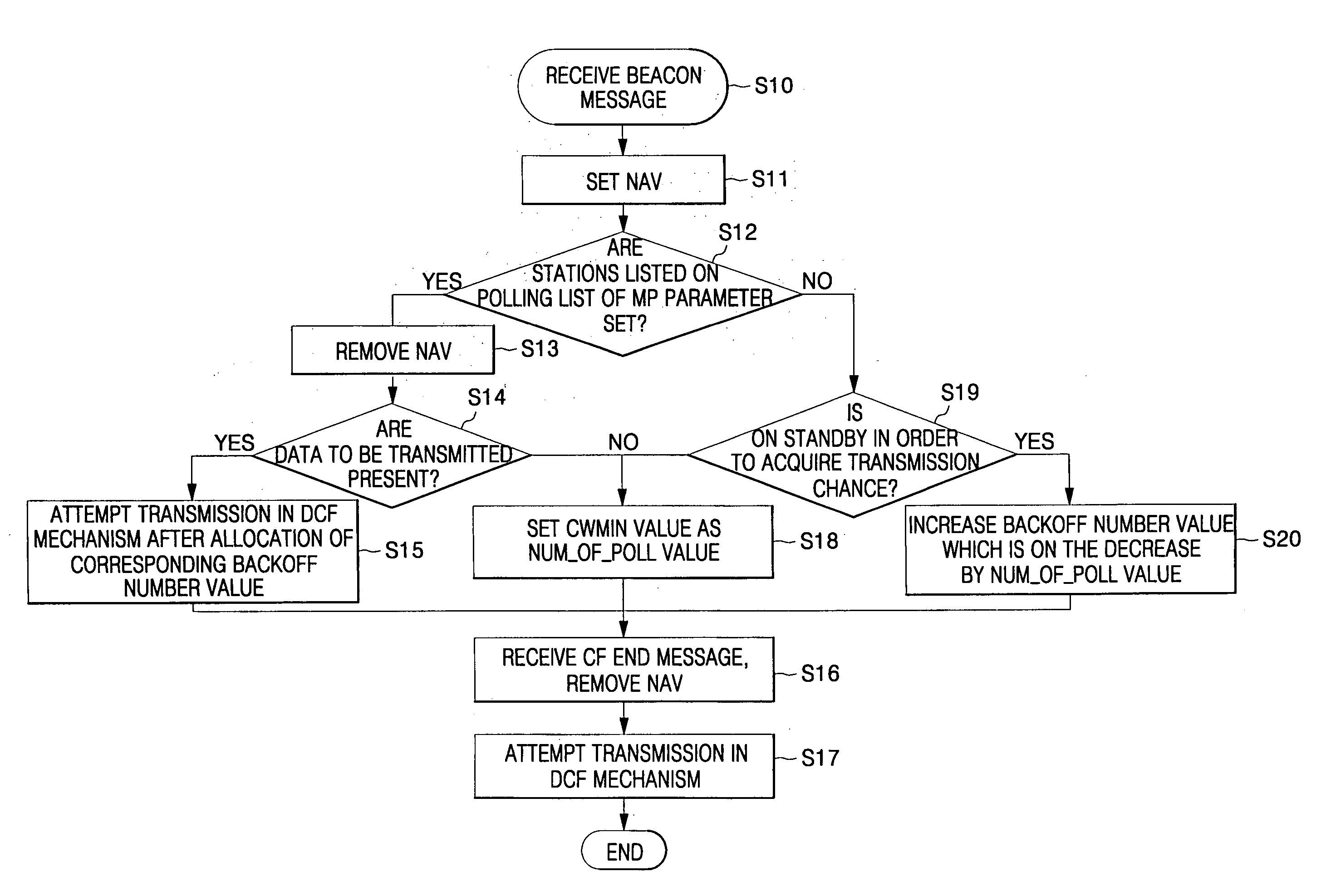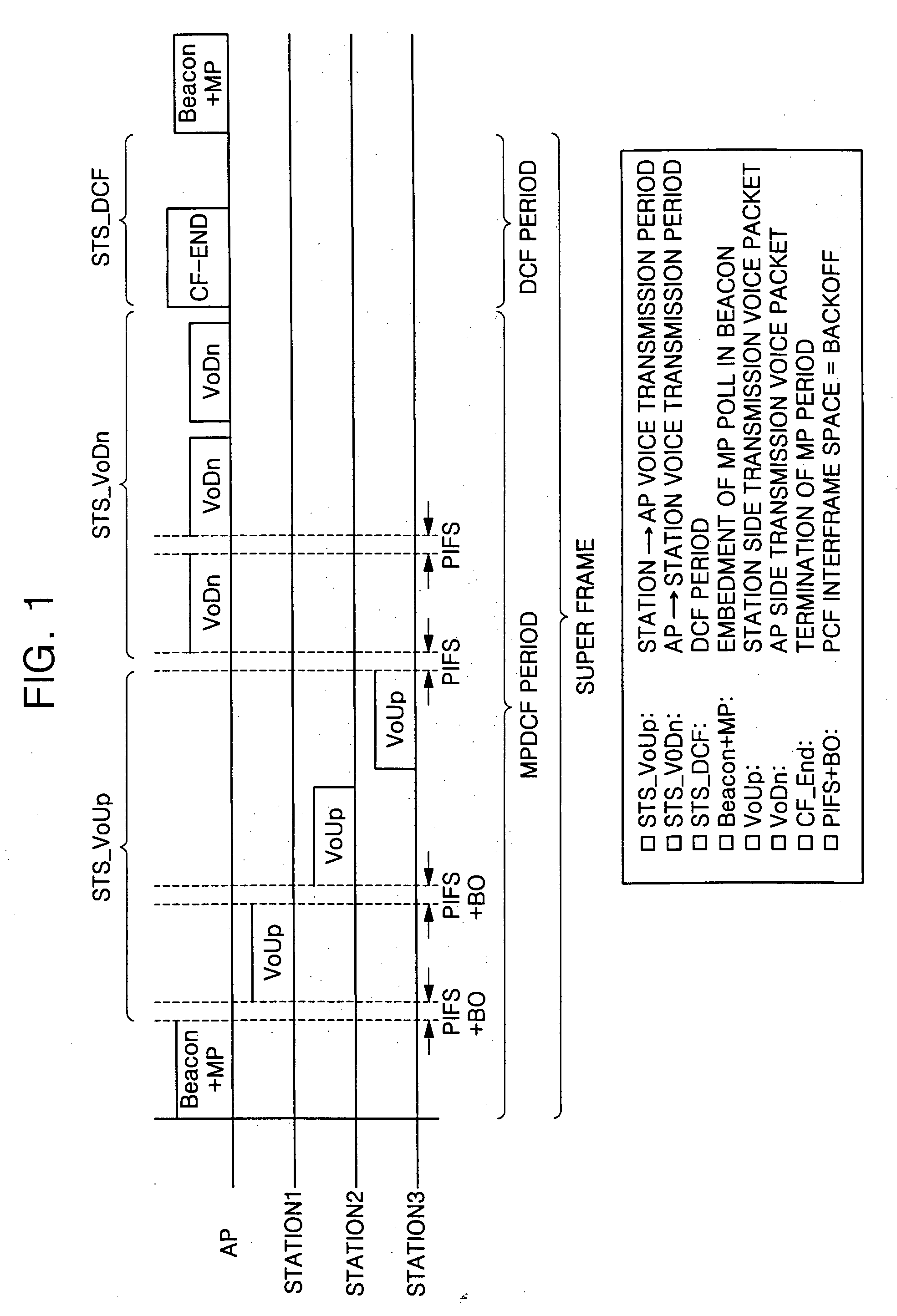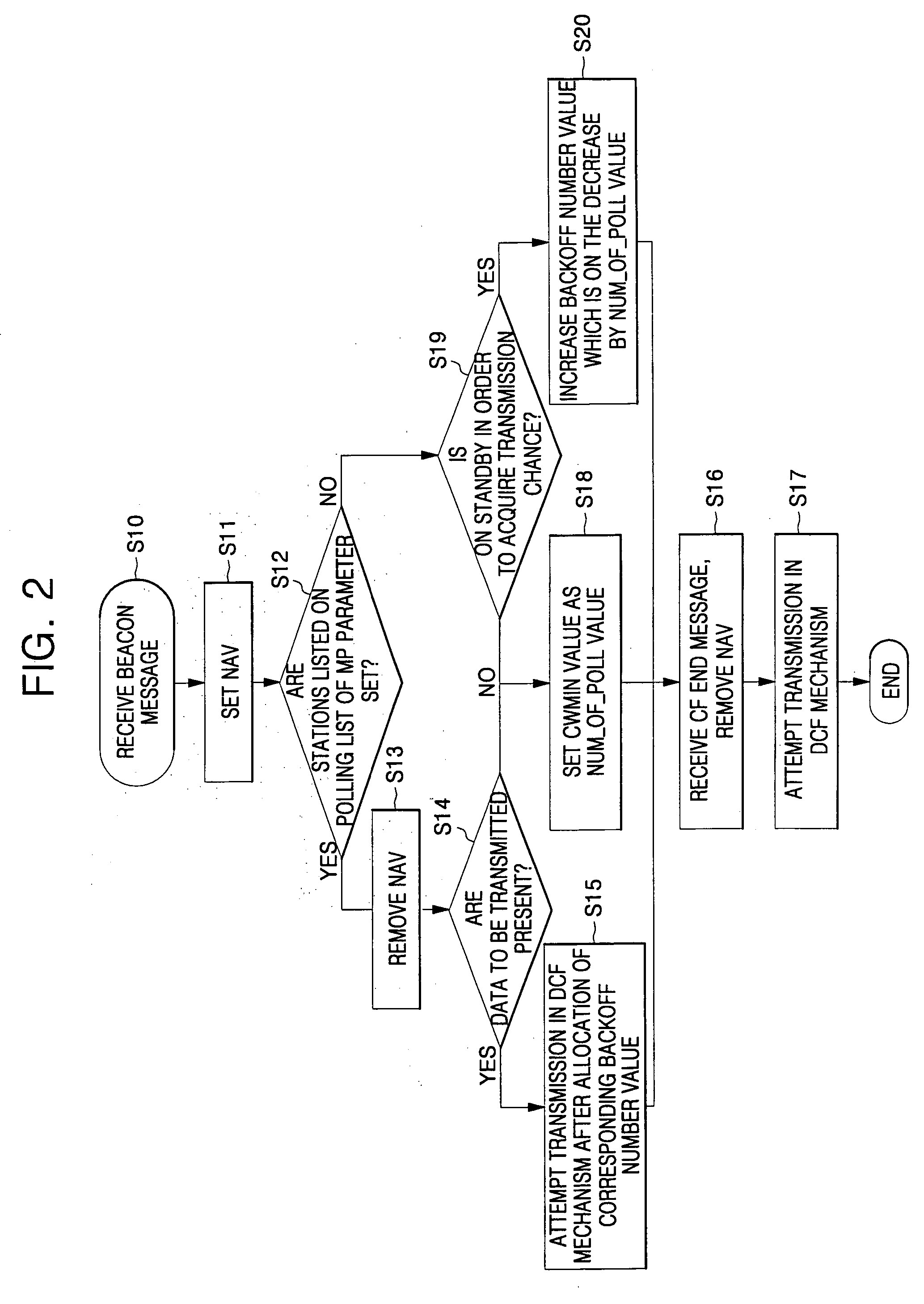Medium access method for contention and non-contention
a medium access and non-contention technology, applied in the field of contention and non-contention, can solve the problems of difficult to support services that are restricted, interfere with multimedia services, and cannot guarantee the qos
- Summary
- Abstract
- Description
- Claims
- Application Information
AI Technical Summary
Benefits of technology
Problems solved by technology
Method used
Image
Examples
Embodiment Construction
[0050] A medium access method for contention and non-contention according to the present invention will now be described more fully with reference to the accompanying drawings.
[0051] The medium access method for contention and non-contention is as shown in FIG. 1, which shows a superframe having a contention period and a contention-free period in accordance with the present invention.
[0052] To begin with, there are provided a plurality of stations and an AP for broadcasting to these stations so as to satisfy a contention base and a non-contention base at the same time, and so as to allow communication modes for these contention bases to mutually coexist. The plurality of stations may be classified into a first group having stations for non-contention and a second group having stations for contention.
[0053] Medium access between the first or second group and the AP is carried out within a superframe. The superframe is made up of a non-contention (or contention-free) period, i.e., ...
PUM
 Login to View More
Login to View More Abstract
Description
Claims
Application Information
 Login to View More
Login to View More - R&D
- Intellectual Property
- Life Sciences
- Materials
- Tech Scout
- Unparalleled Data Quality
- Higher Quality Content
- 60% Fewer Hallucinations
Browse by: Latest US Patents, China's latest patents, Technical Efficacy Thesaurus, Application Domain, Technology Topic, Popular Technical Reports.
© 2025 PatSnap. All rights reserved.Legal|Privacy policy|Modern Slavery Act Transparency Statement|Sitemap|About US| Contact US: help@patsnap.com



